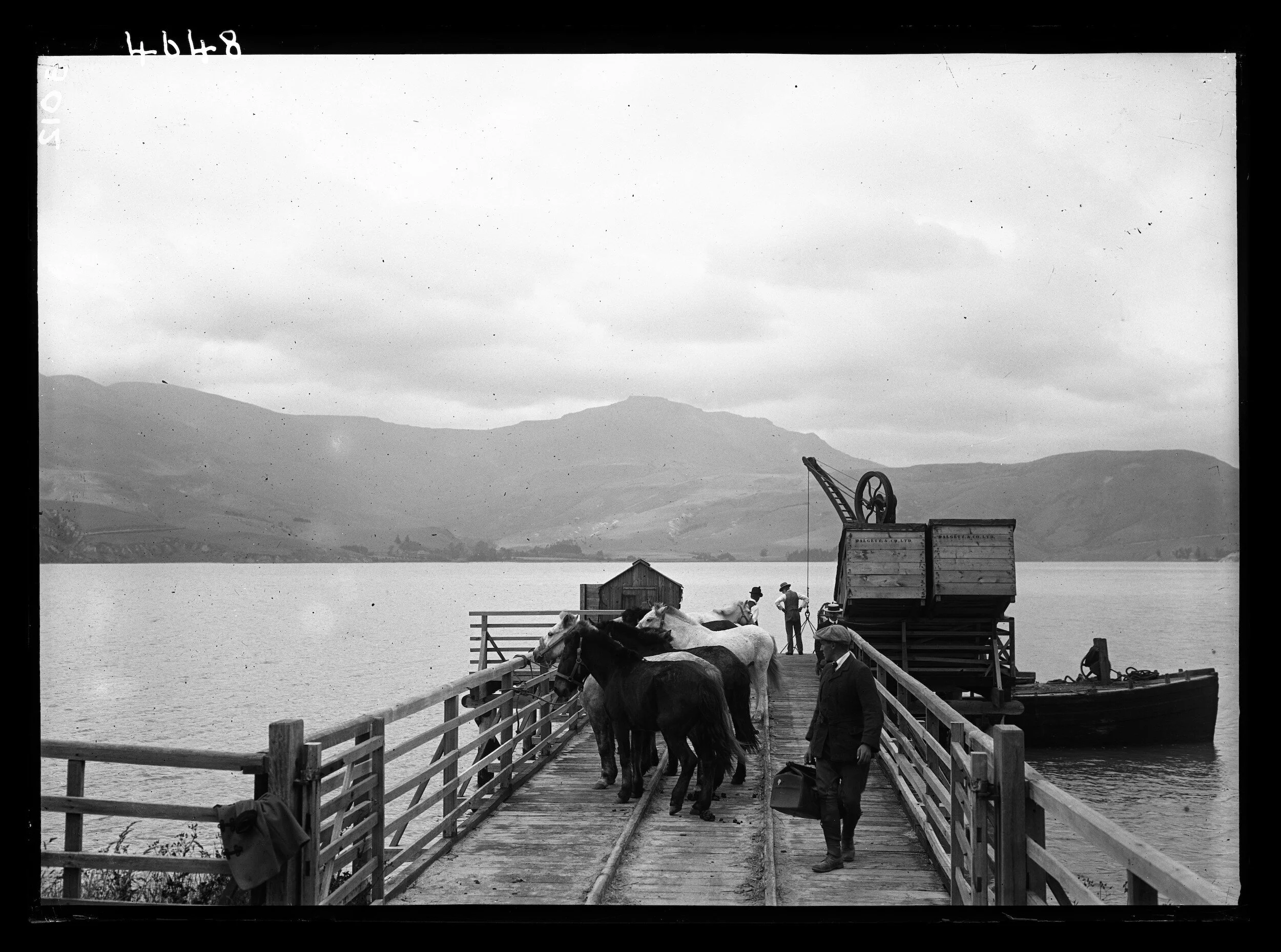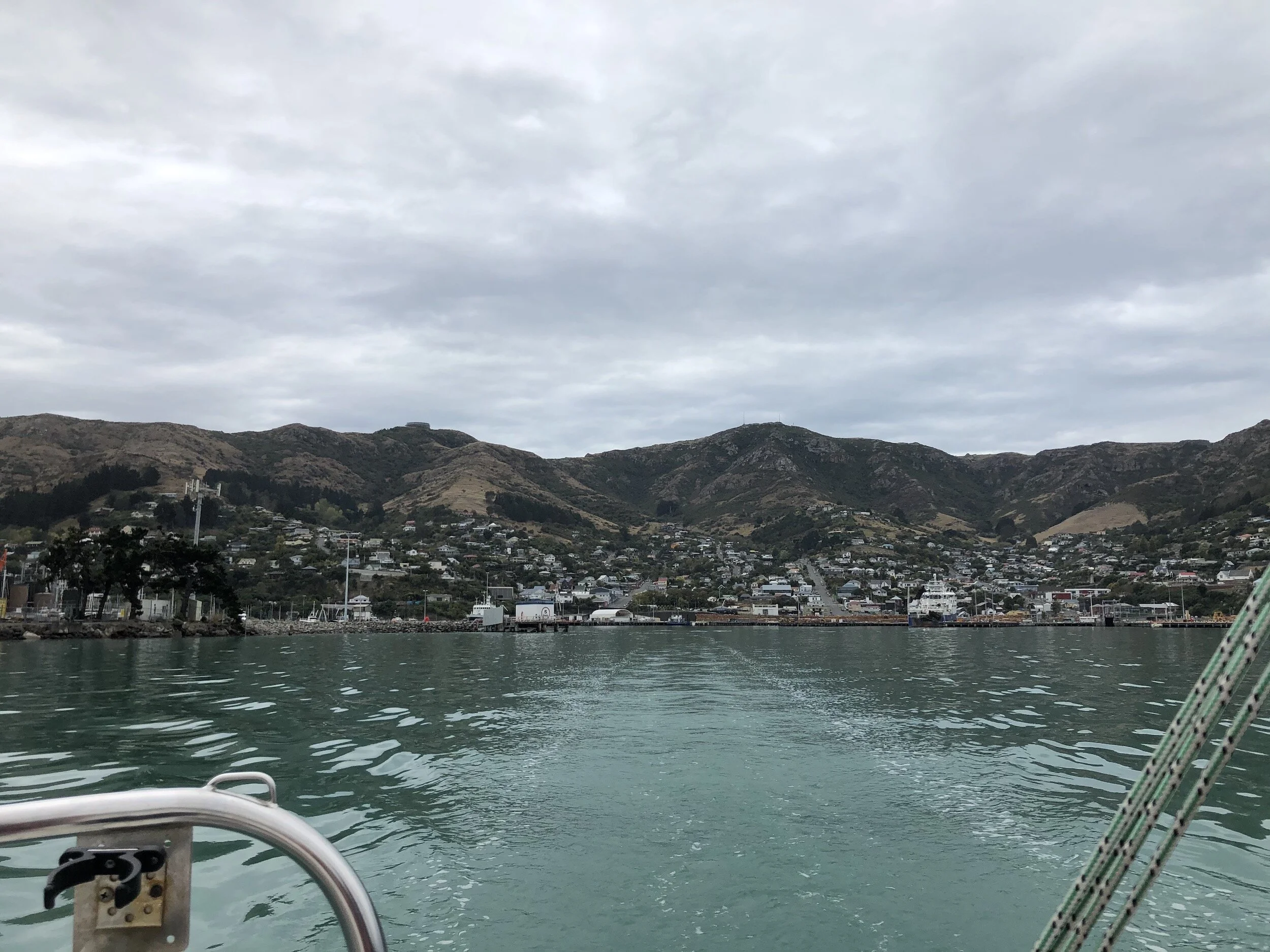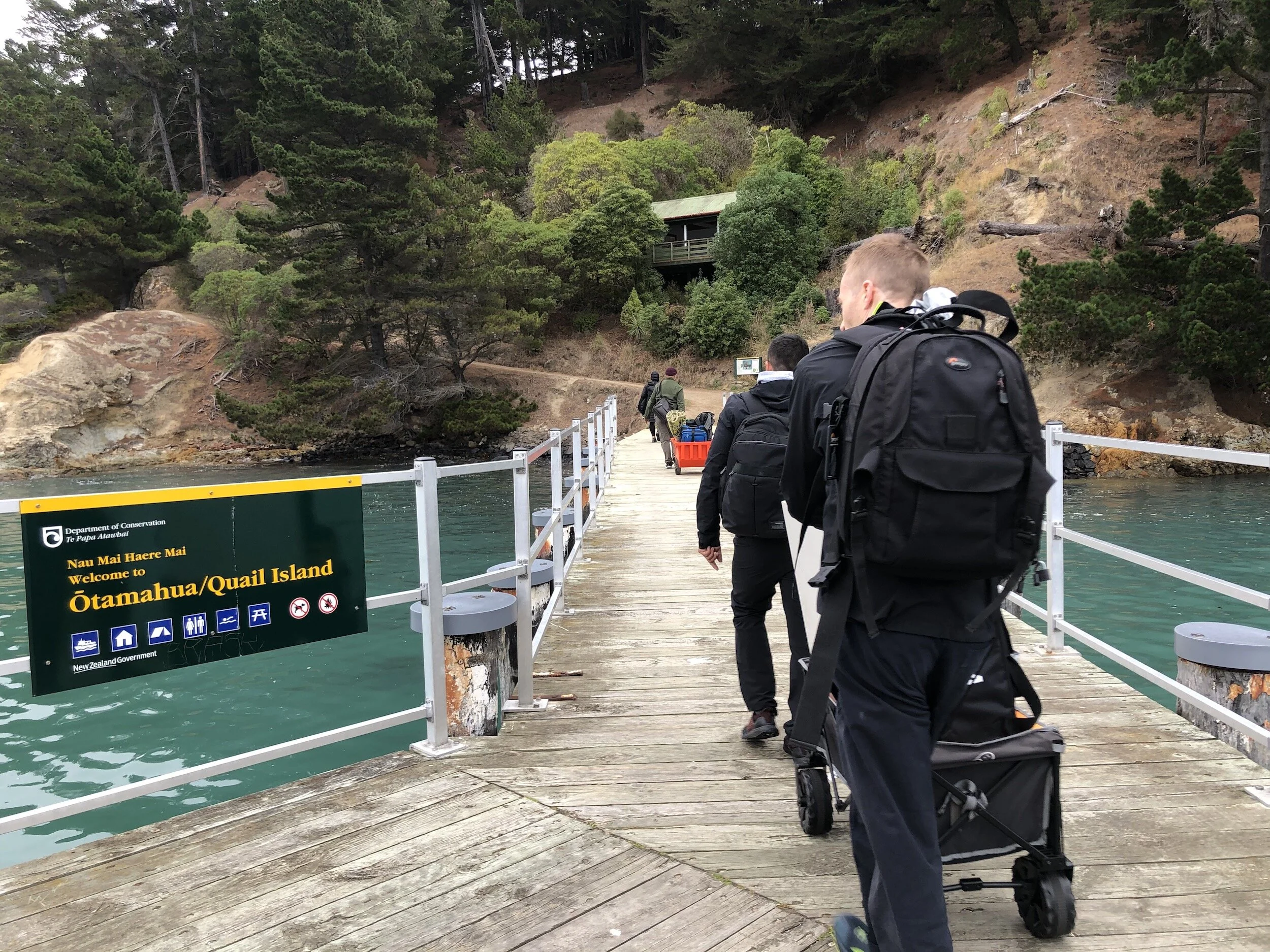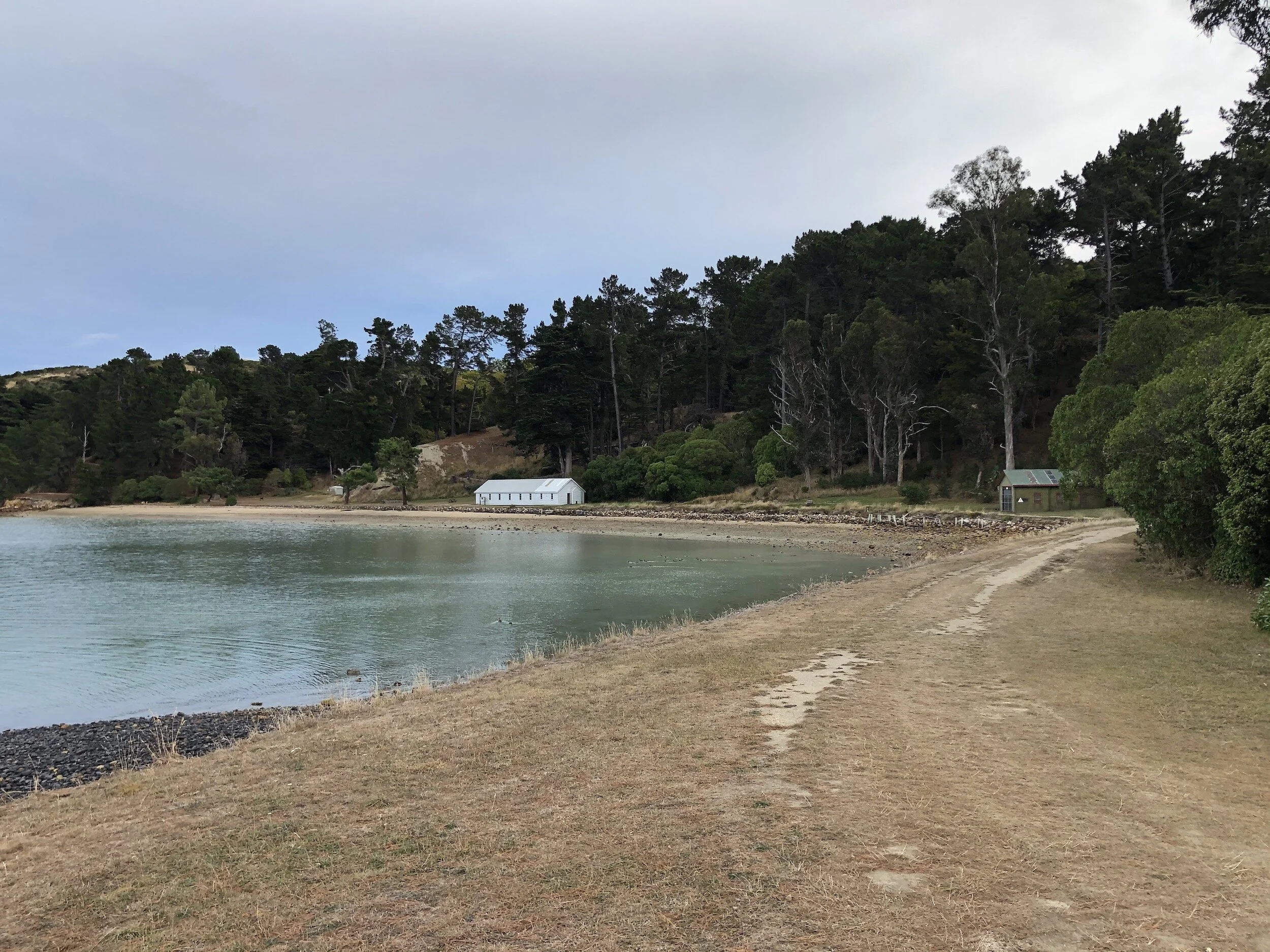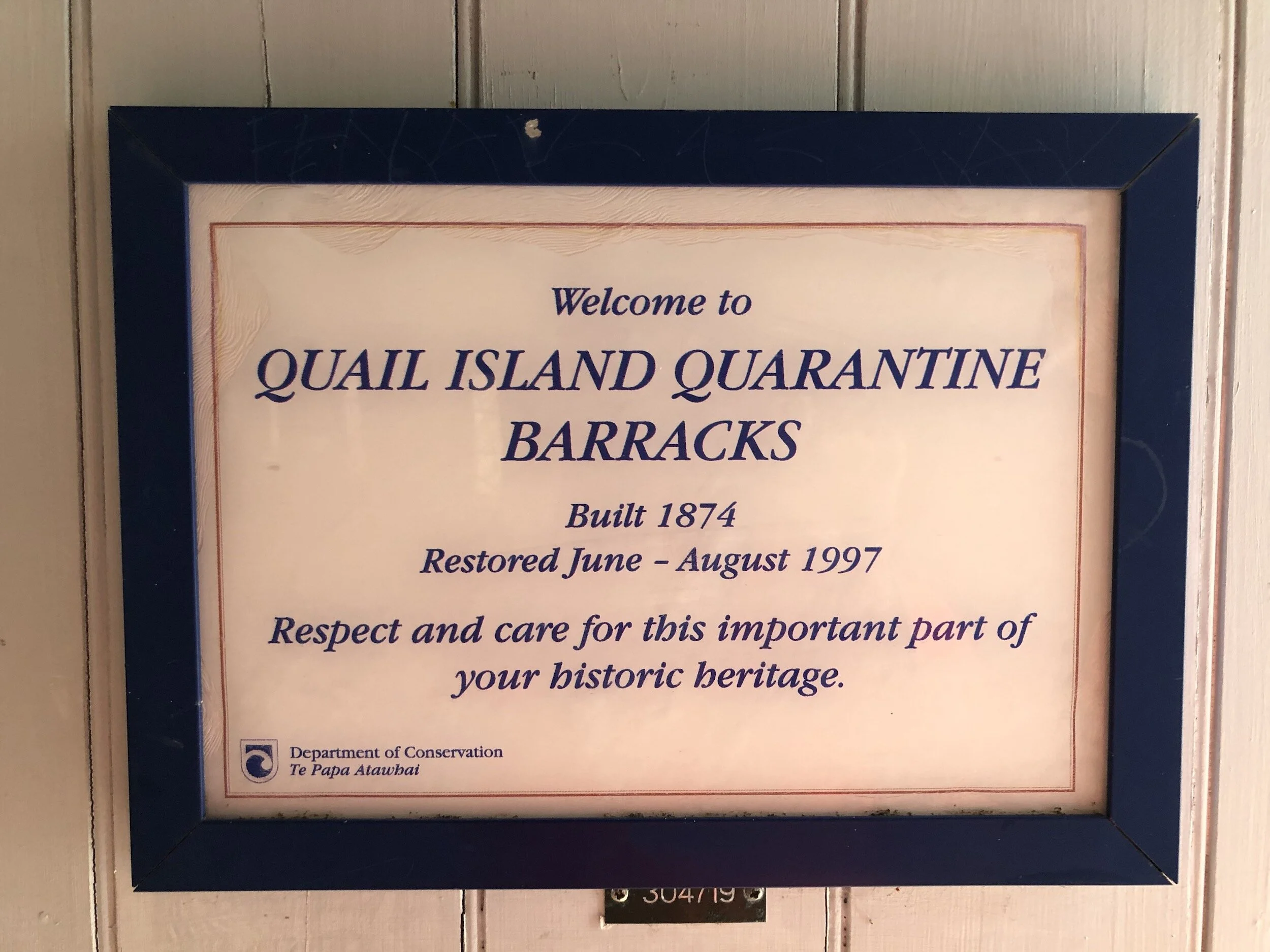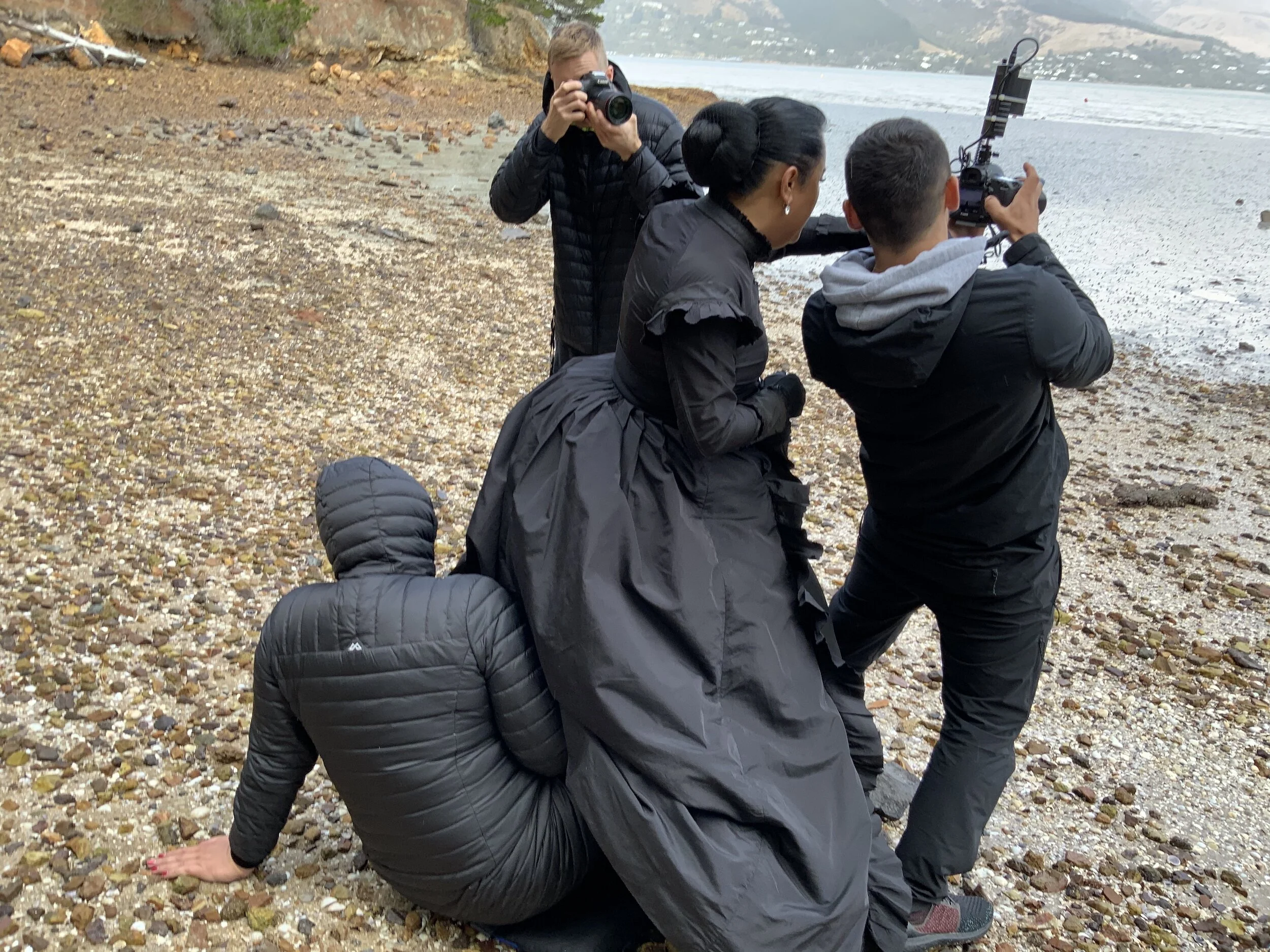Yuki Kihara, Ōtamahua Quail Island (2021).
From Quarantine Islands (2021) series.
Lenticular photograph. 1485 x 1050 mm.
Courtesy of Yuki Kihara and Milford Galleries Queenstown.
Otamahua Quail Island
Ngāti Wheke is acknowledged as the tāngata whenua of Ōtamahua (the place where children collected sea birds’ eggs). The Island is also known by several names including Te Kawakawa (kawakawa pepper tree) and Captain Mein Smith named the island ‘Quail’ after seeing Koreke native quail in 1842. Ōtamahua was the second Island to establish a quarantine station in Ōhinehou Lyttelton Harbour, after Rīpapa Island in 1873. From 1879 to 1880, the Ōtamahua quarantine station held children with diphtheria (1879-80). It would again be used to quarantine people recovering from the influenza pandemic at the end of WW1. Aotearoa’s first and only leprosy colony was established in Ōtamahua in 1907. The Island also quarantined livestock and Antarctic dogs. In 1925, the leprosy sufferers from Ōtamahua were transferred to the leprosy colony in Nuʻutele Islet in Western Sāmoa during the New Zealand Colonial Administration (1914-1962) and subsequently transferred to a leprosy colony in Makogai Island, Fiji. Only a few sufferers returned to their homes. Ōtamahua became a recreation reserve in 1975.
Behind the scenes
Lenticular Print Simulations
Yuki Kihara, Ōtamahua Quail Island (2021) – simulated view of lenticular print animation

